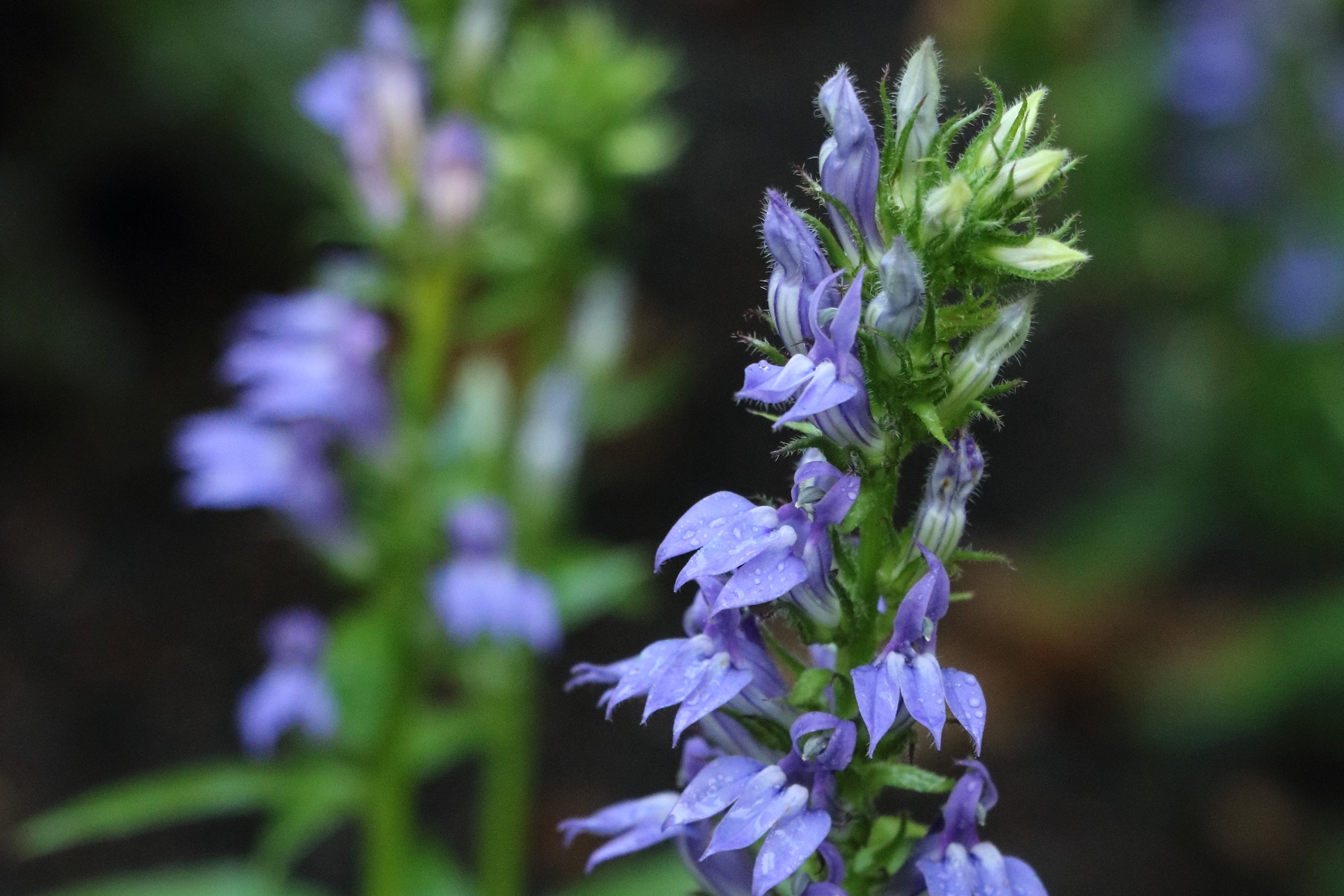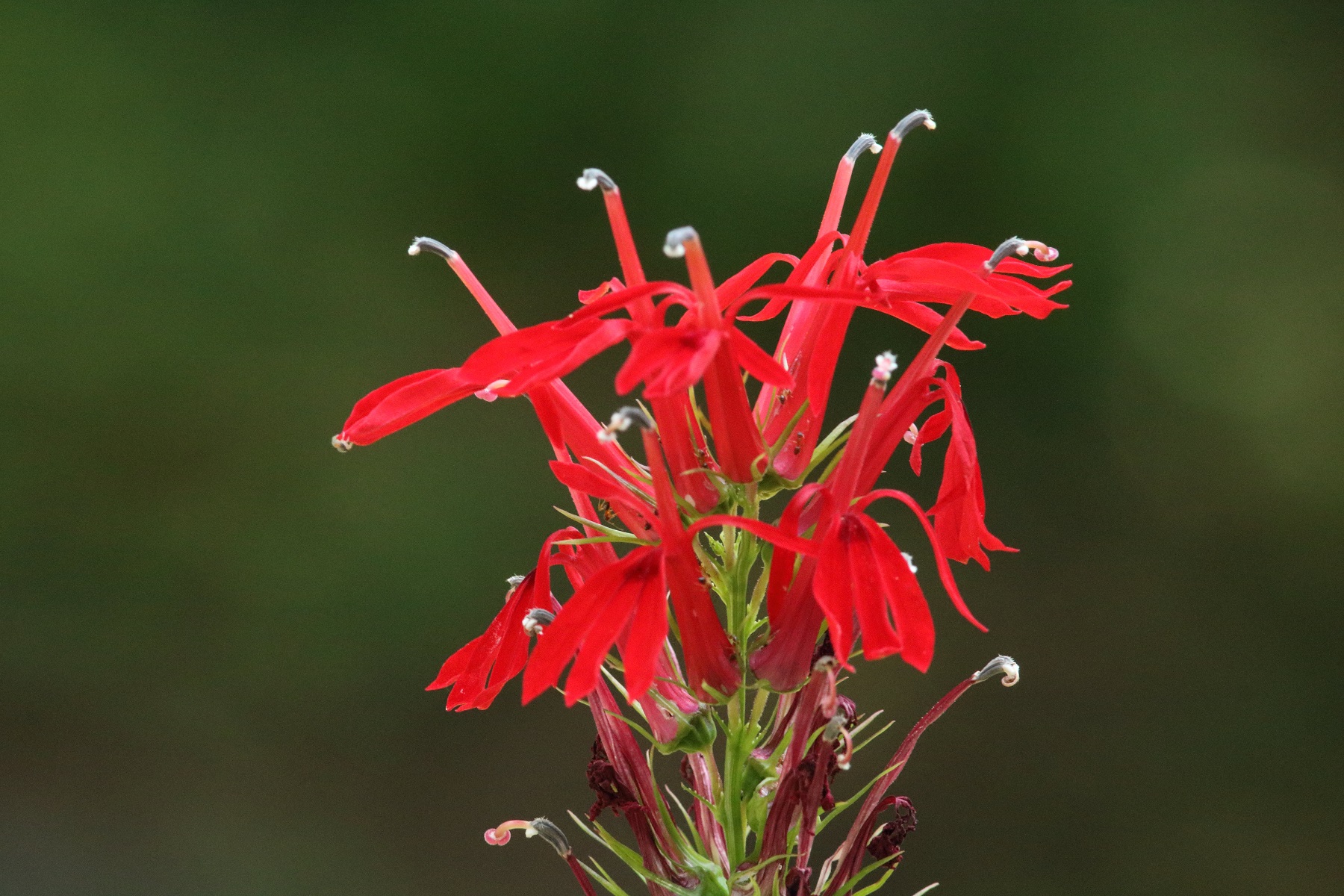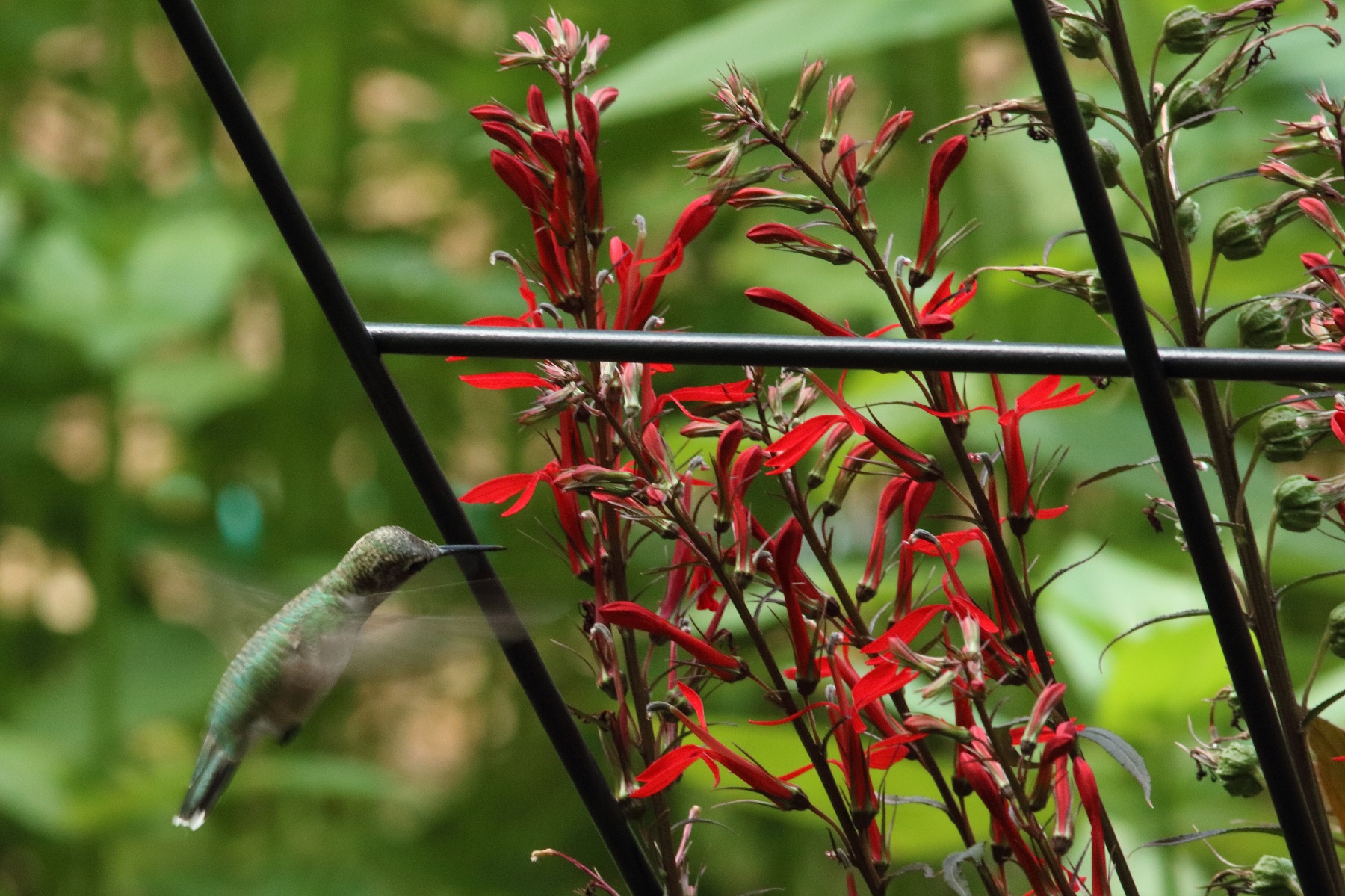GARDENING IN HARMONY WITH NATURE IN THE NORTHEAST
Favorite Hummingbird Plants
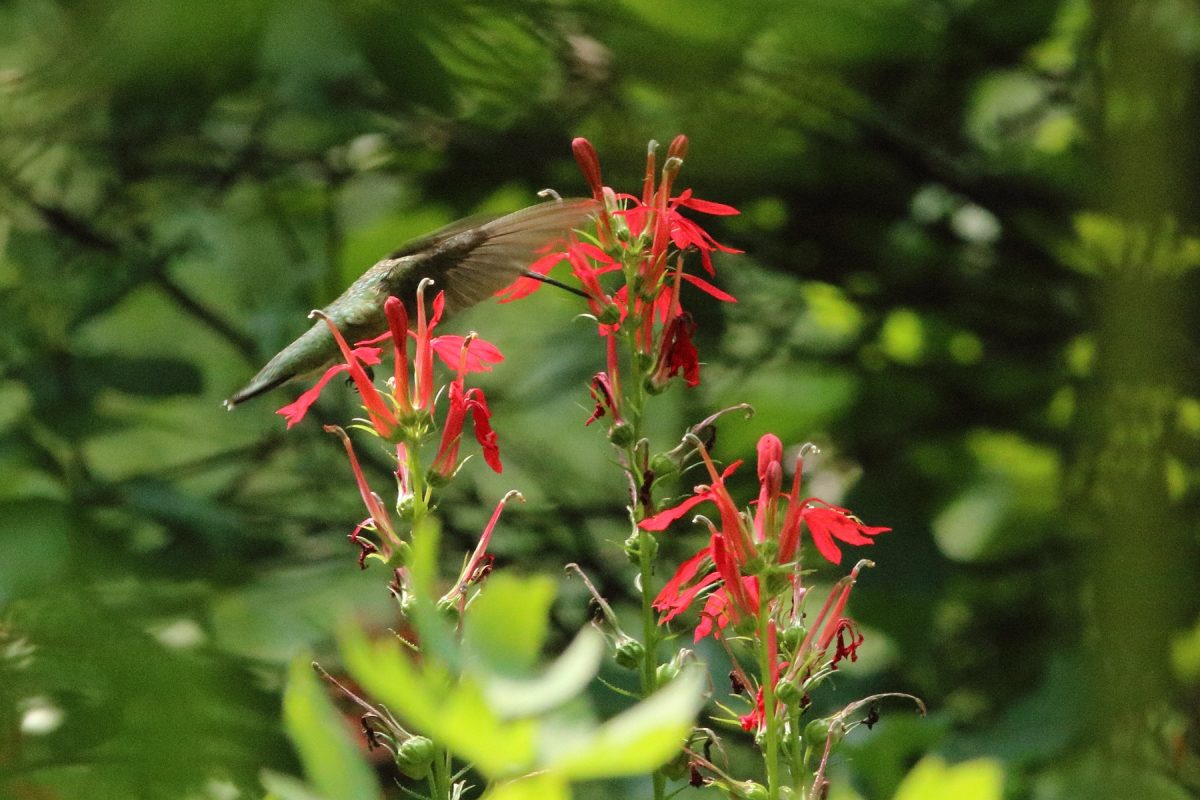
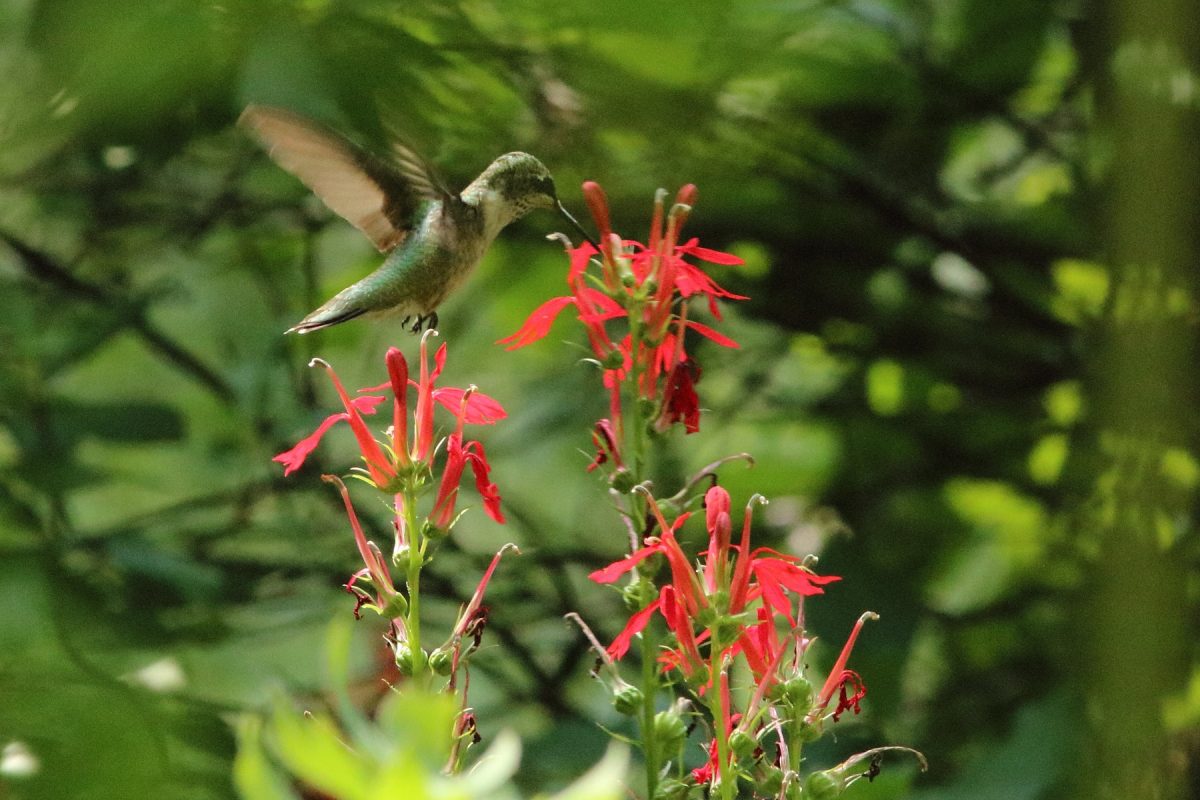
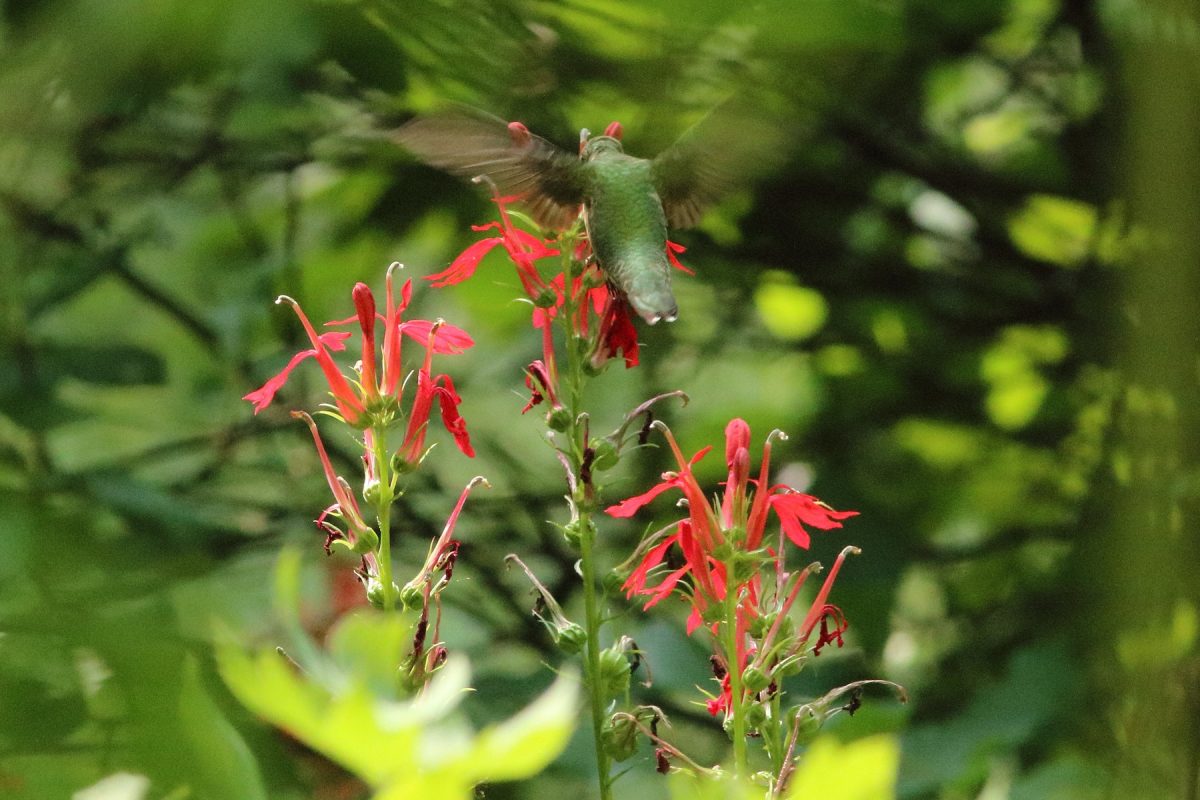
Whereas the western USA is home to several hummingbird species, only one is native to the east. The Ruby-Throated Hummingbird arrives at our New York latitudes every year around May and spends the warm months feeding and breeding here, before migrating back to Central America for the winter.
We have been attracting these tiny birds with sugar water to our house for several years, but now, with the woodland garden much improved, they visit the entire season without us supplementing their diet artificially. Hummingbird watching in the garden has become one of our favorite pastimes.
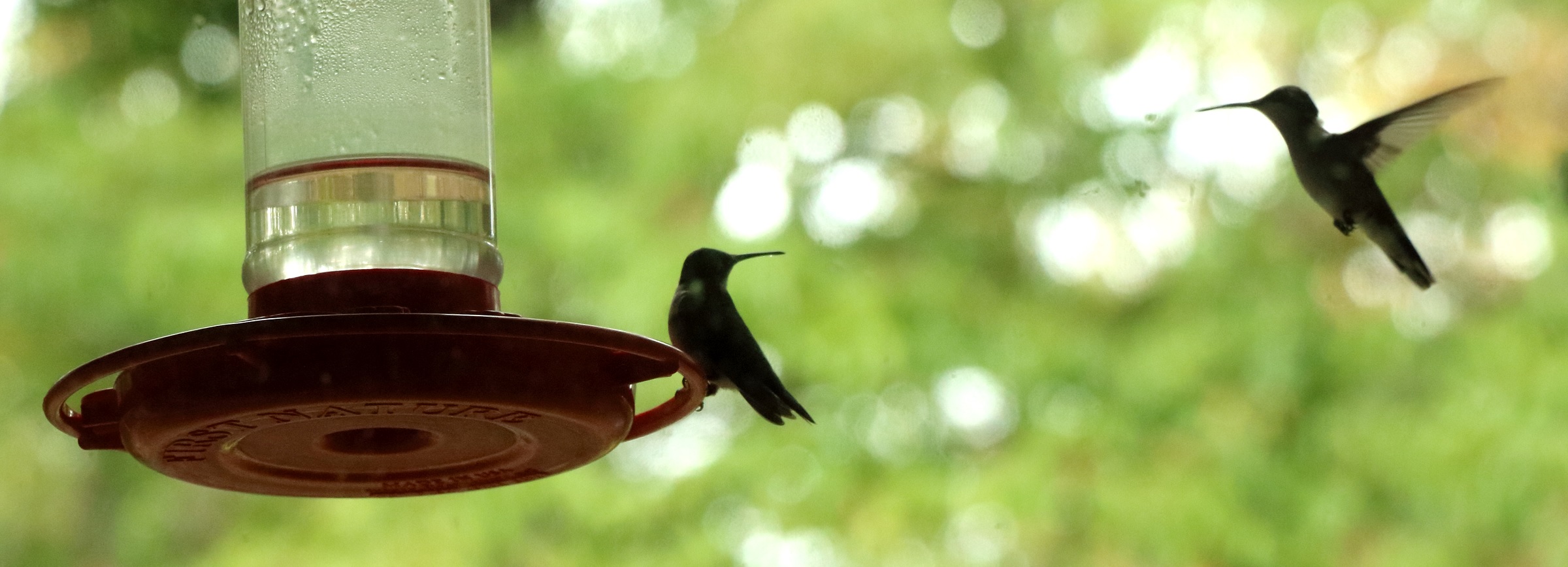
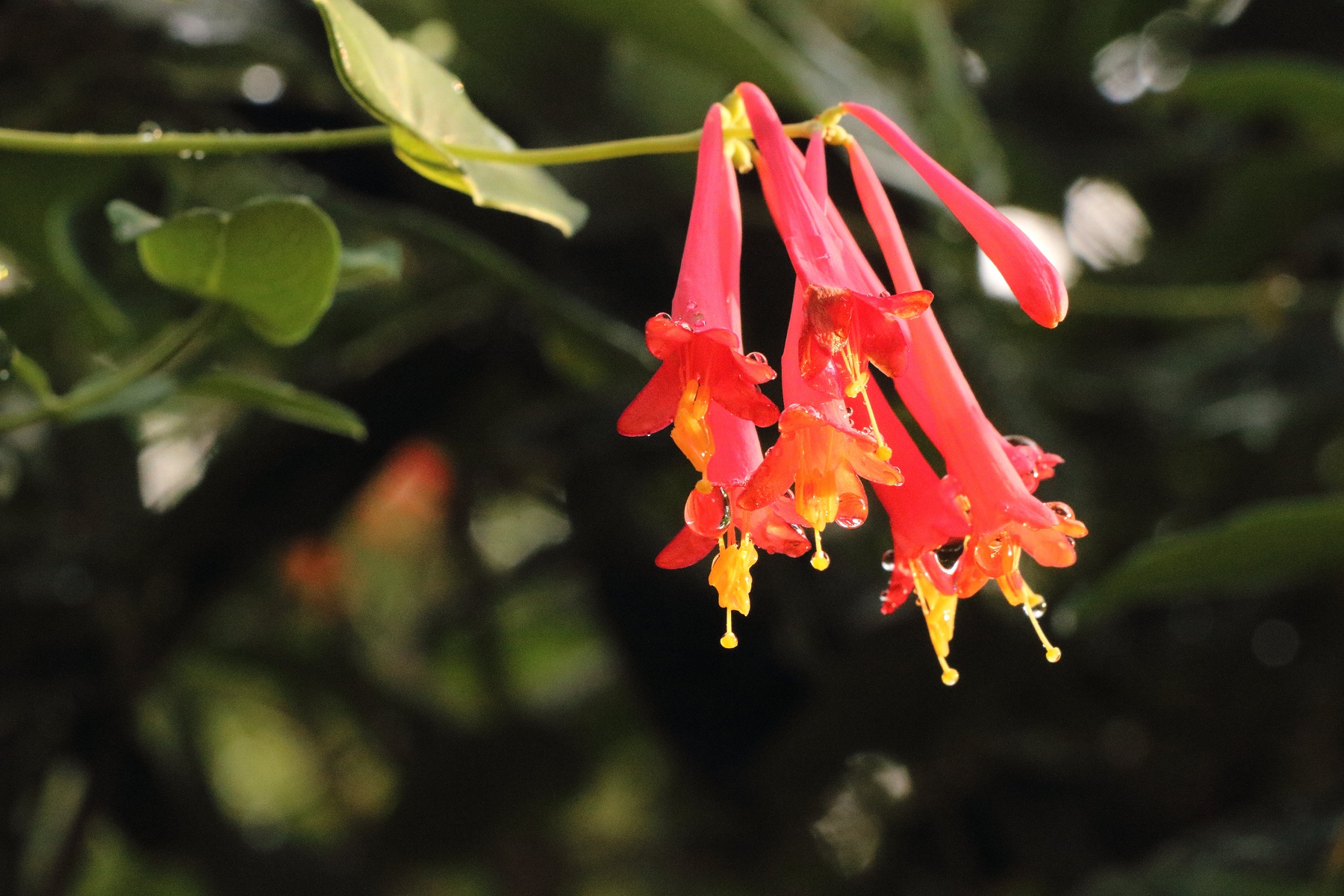
Lonicera sempervirens (Trumpet Honeysuckle)
Over the years we have identified the woodland plants the hummingbirds prefer in our garden. We strive to have at least one of these hummingbird favorite flowers in bloom all summer long so that the tiny bird will have a continuous food supply.
If a hummingbird really loves “its” flower, it will defend it against other hummingbirds, butterflies and even well-meaning humans by charging and generating a characteristic deep hum with their wings. It’s quite a thrill, experiencing this magical encounter for the first time!
A fun way to watch hummingbirds on a hot summer day is under a sprinkler, where they love to wash and cool off.
The arrival of the first Ruby-Throated Hummingbird each year in our garden has been closely associated with the bloom time of two species of flowering plants: Giant Solomon’s Seal and Eastern Red Columbine.
Giant Solomon’s Seal is one of several native Solomon’s Seal Species. The big dangling bell-shaped flowers make it’s nectar easily accessible to hummingbirds. The flowers are white, but at this early time of the year red flowers are in short supply, and the Ruby-Throated Hummingbird cannot be as picky with colors as later in the year. We have found Giant Solomon’s Seal to be a vigorous grower and very easy to propagate by digging up a clump and dividing the rootstock. We have them growing close to the house so we can conveniently observe the first hummingbirds from the warm indoors.
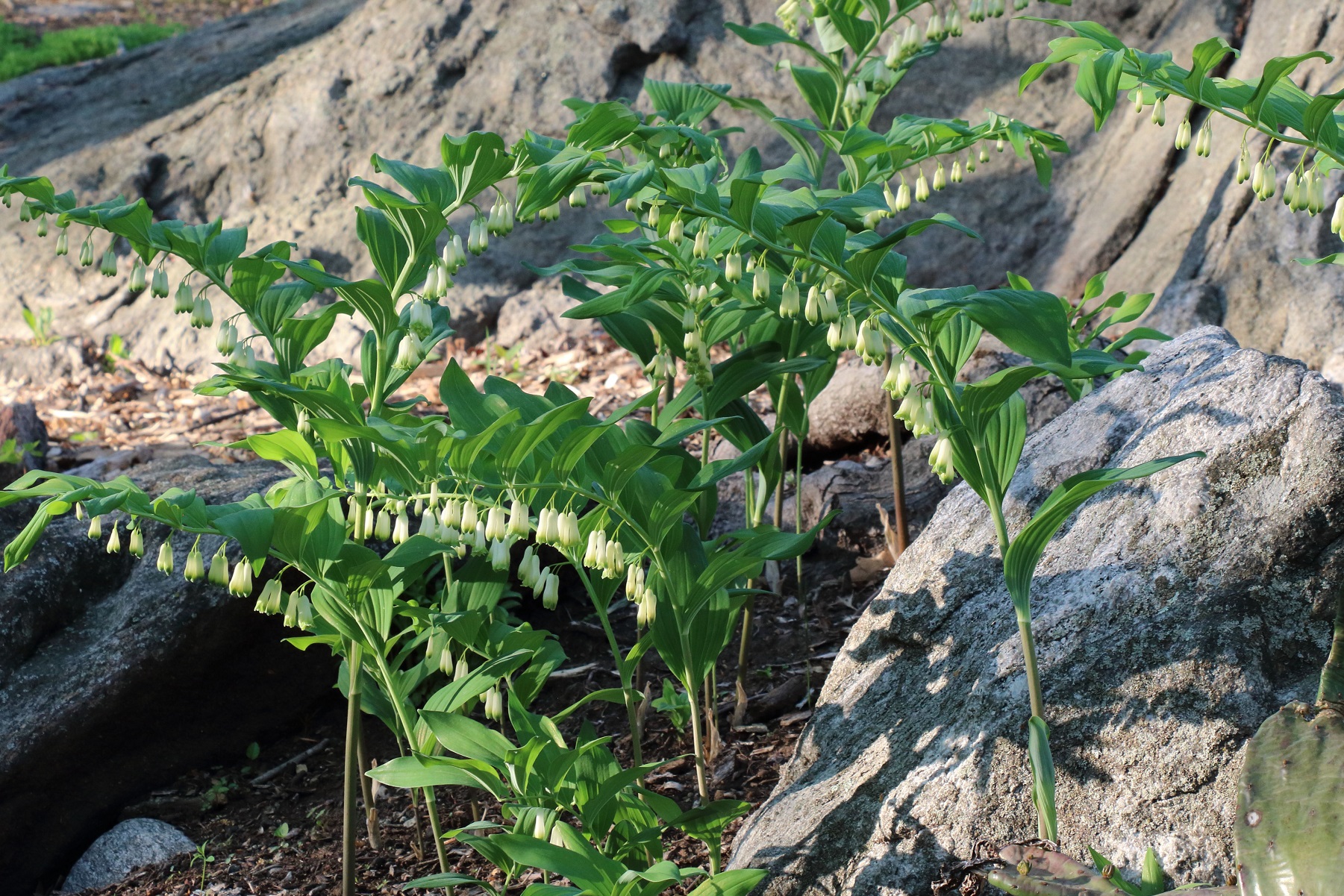
Eastern Red Columbine is not really a woodland plant, but it does fairly well in part-shade at the forest edge. Columbines behave as short-lived perennials, and it is necessary to let them go to seed in order to ensure they stick around over the years. We also supplement their numbers by winter-sowing either our own collected or a packet of ordered columbine seed every year. They usually grow readily in available space between other plants.

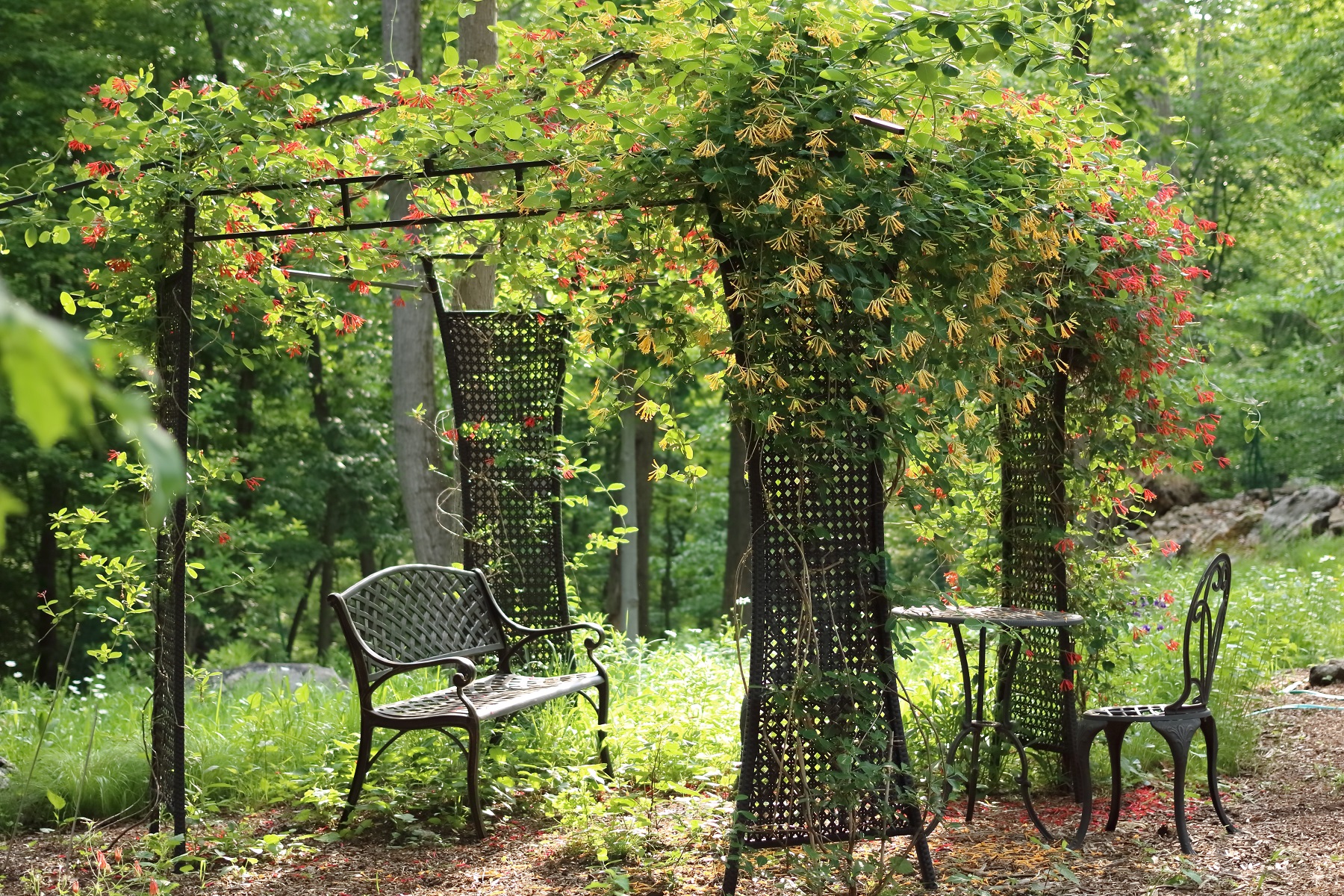
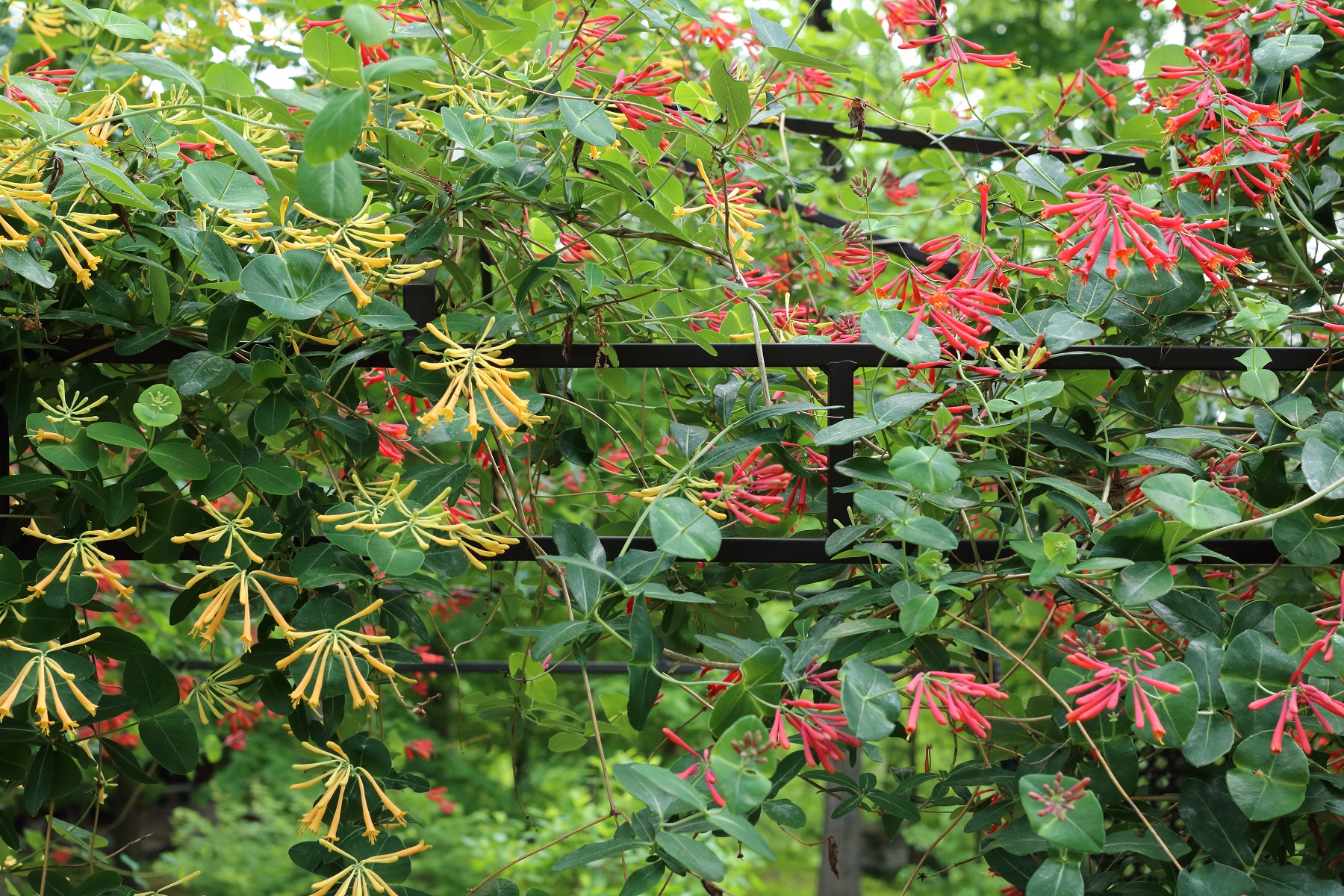
'John Clayton' (yellow) and 'Major Wheeler' (right)
Scarlet Beebalm
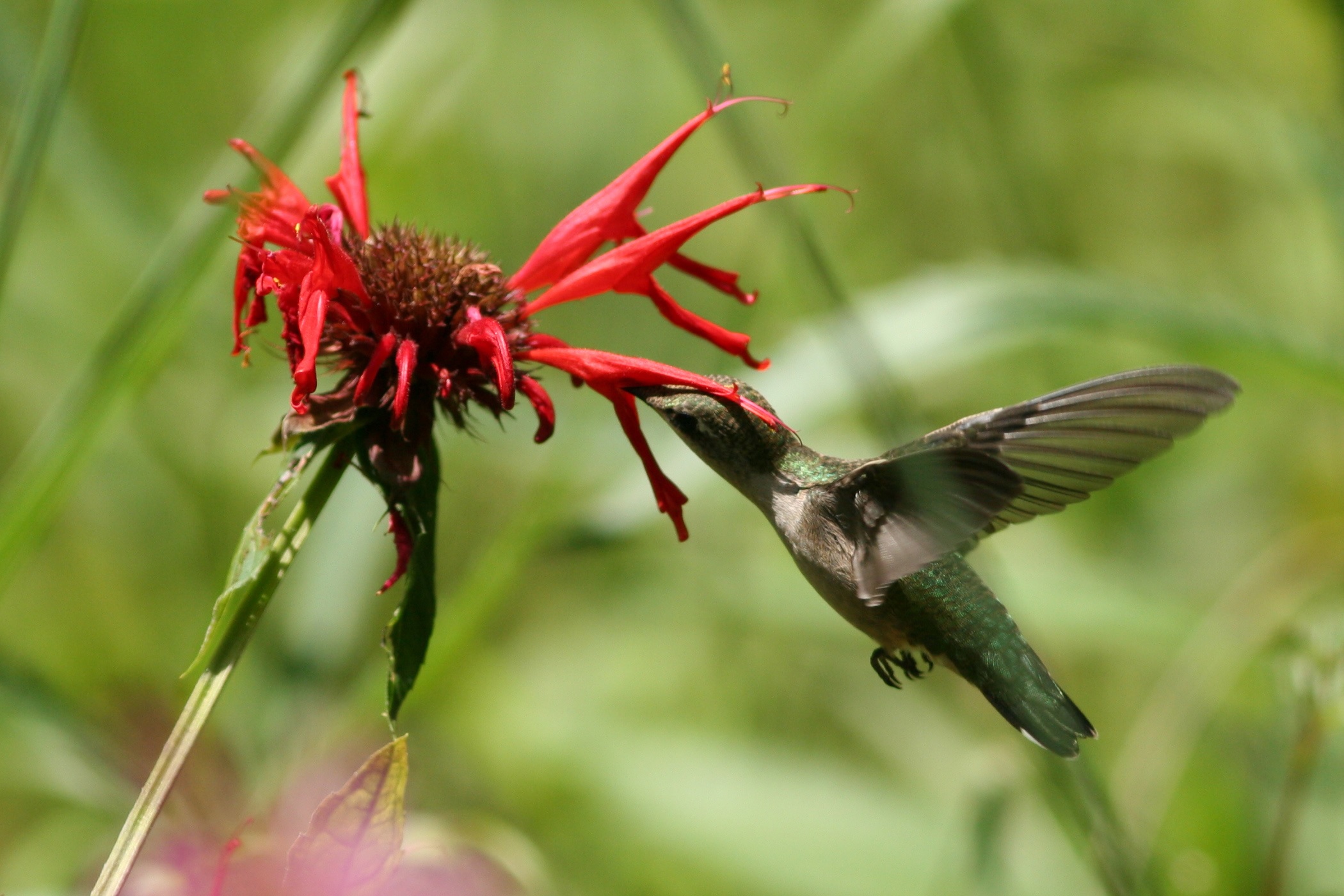
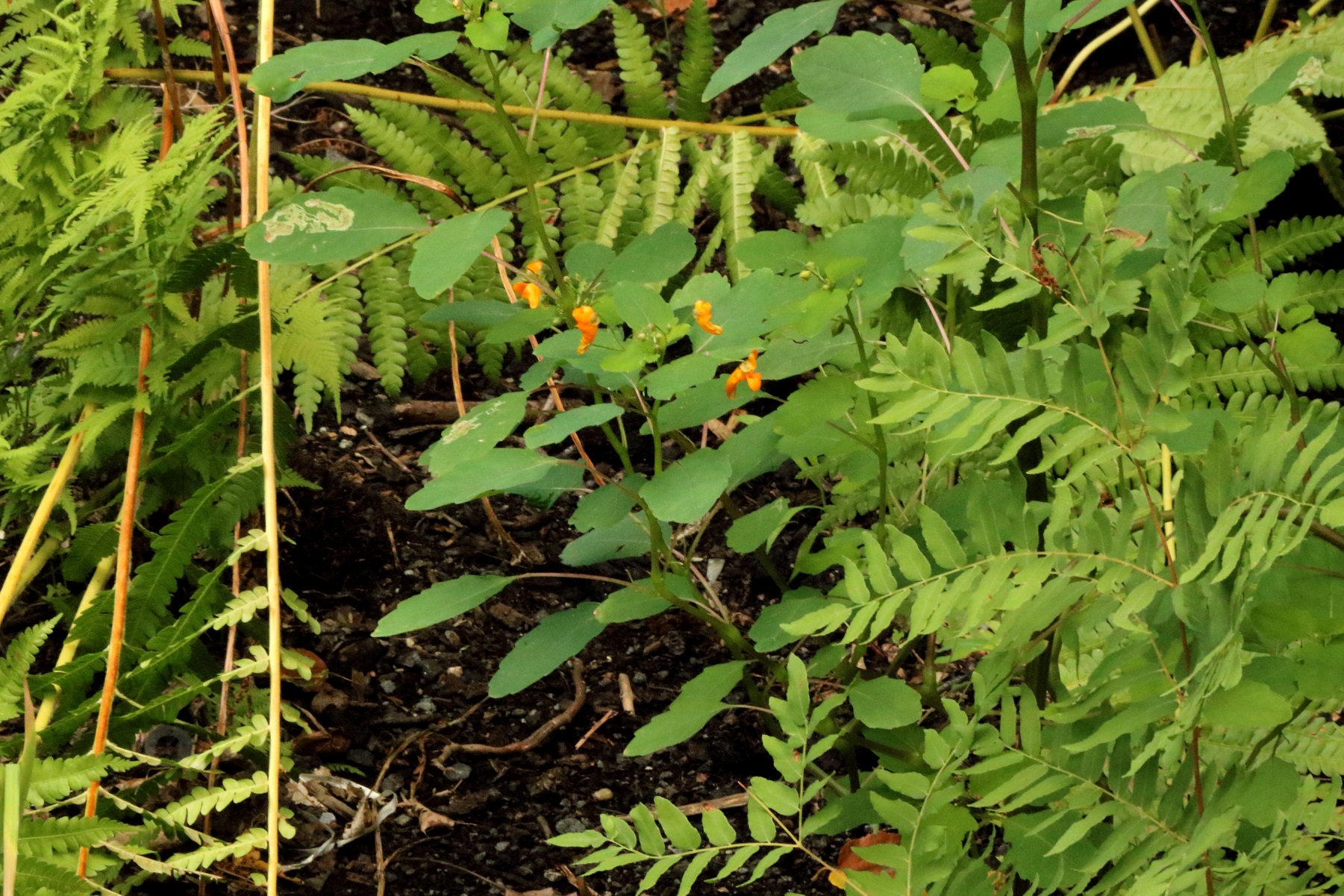
Hummingbird visiting Jewelweed


(non-native annual)

(non-native annual)
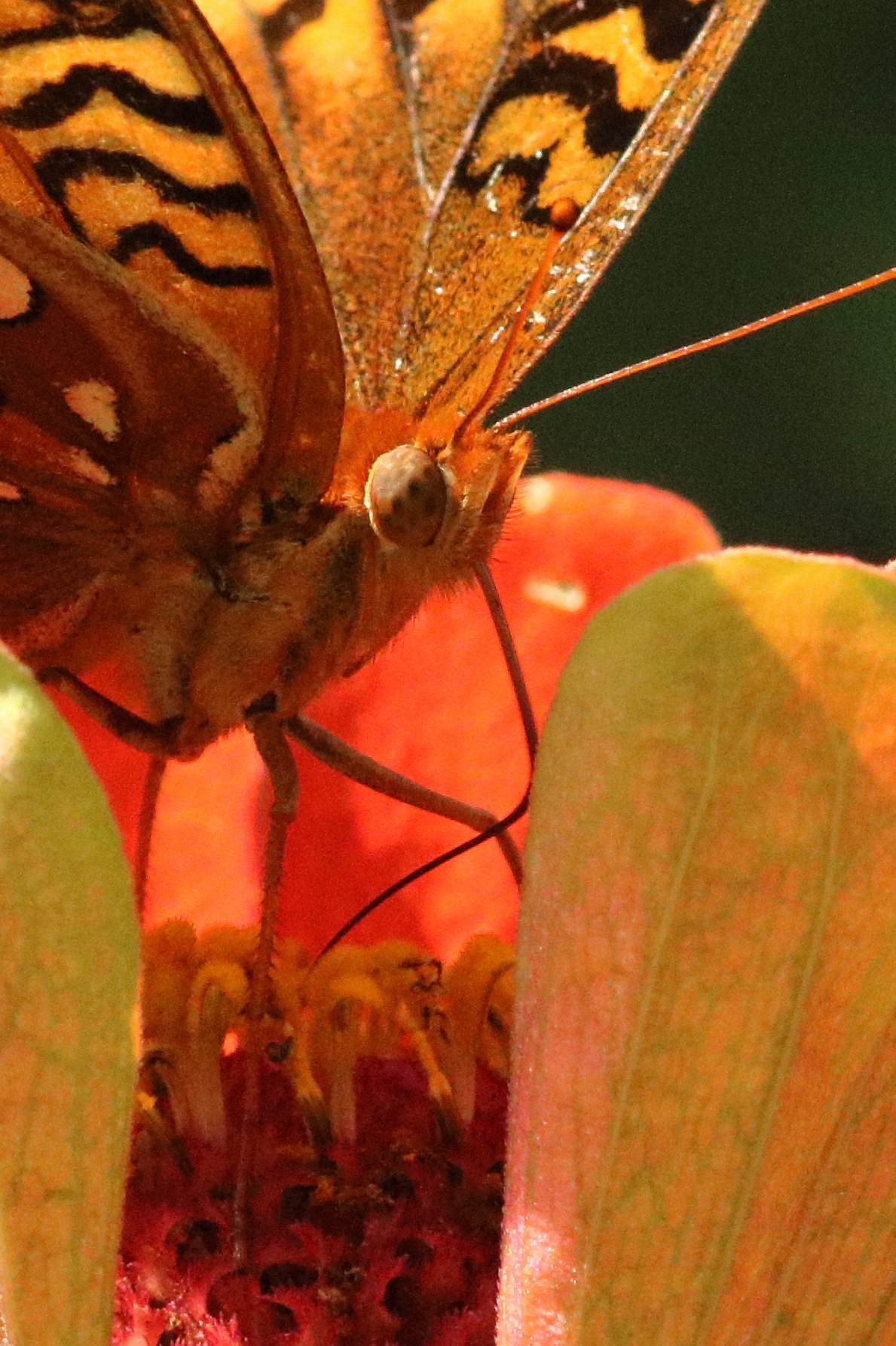
(non-native annual)
Now here is the real stunner: Turkscap Lily! This is a native Lily growing from a huge bulb. The plant literally shoots out of the ground in spring, reaching 8 feet in our garden by August. Also in August on the order of 20 flowers per plant, each 2-3 inches large open up in a really unique way, where the petals are bending backwards. We have seen Tiger Swallowtail Butterflies feeding on these flowers for hours until the yellow Butterflies were painted entirely in the brown pollen. Hummingbirds visit the flowers as well, albeit not as frequently as the Swallowtails.
Turkscap Lily likes to grow under shrubs where the first growth spurt on the order of 3-4 feet happens in the shade and the stem and flowers finally tower over the shrub layer. The plant propagates nicely by producing bulblets. The only problem Turkscap Lily experiences in our garden is an onslaught of bright red Lily Leaf Beetles. These exotic beetles multiply in a very short time and can completely defoliate and kill native lilies. We have learned to recognize the black larvae of the Lily Leaf Beetle on the underside of slightly nibbled leaves, and simply pick the damaged leaves with the larvae by hand. The adults are not camouflaged at all and can be picked by hand with some experience. (They like to drop off the plant as a defensive mechanism, so open your other hand to catch them just in case).
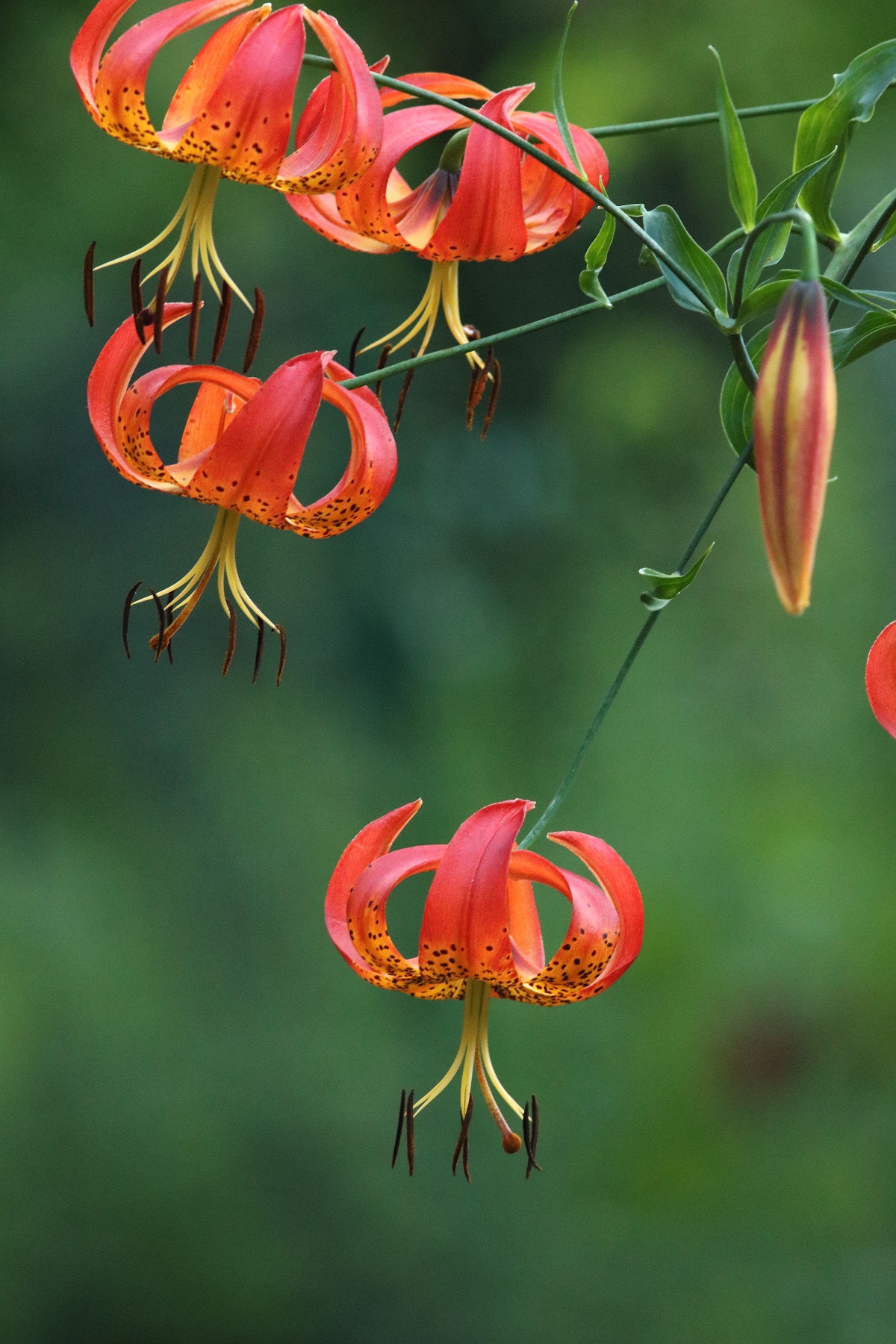
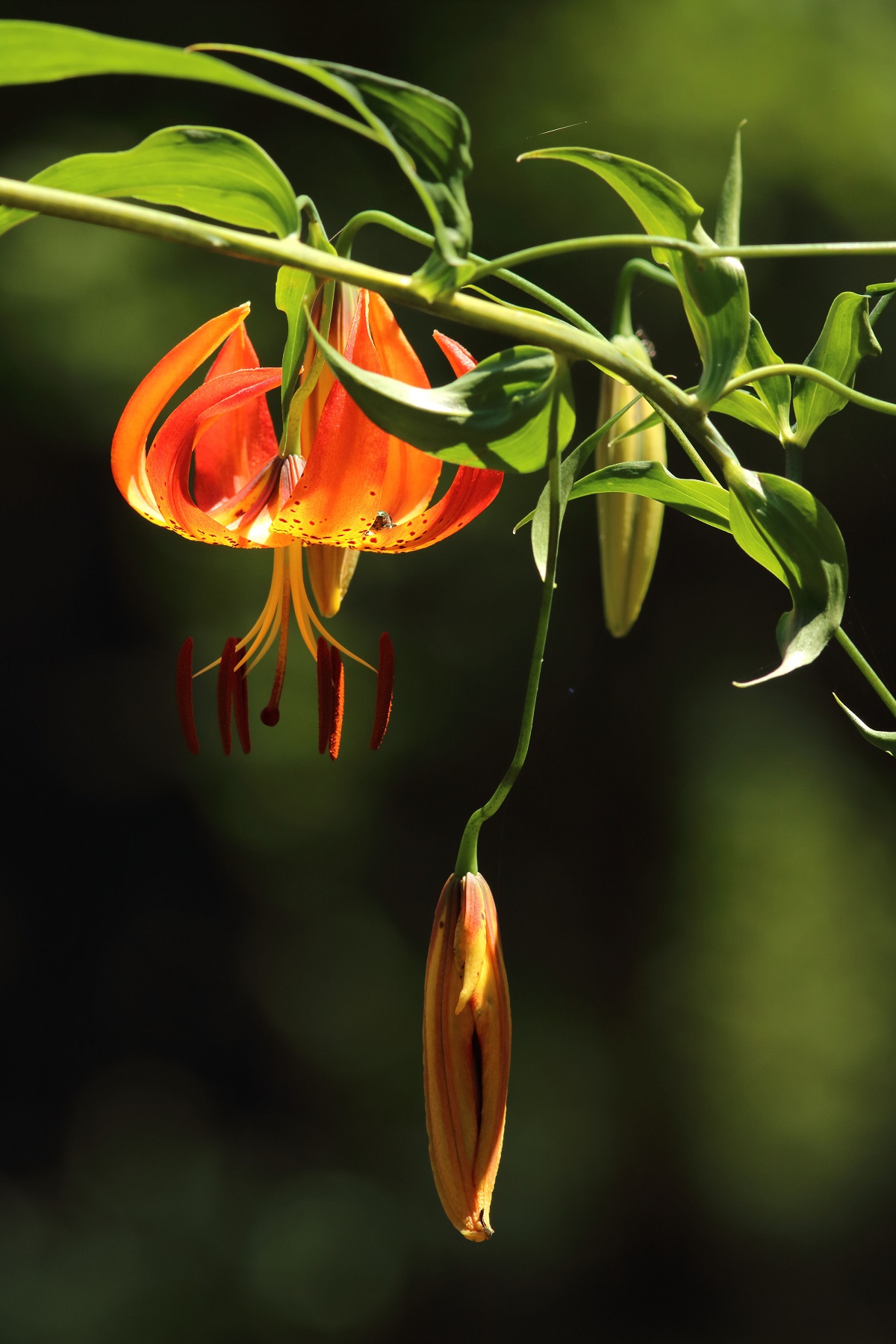
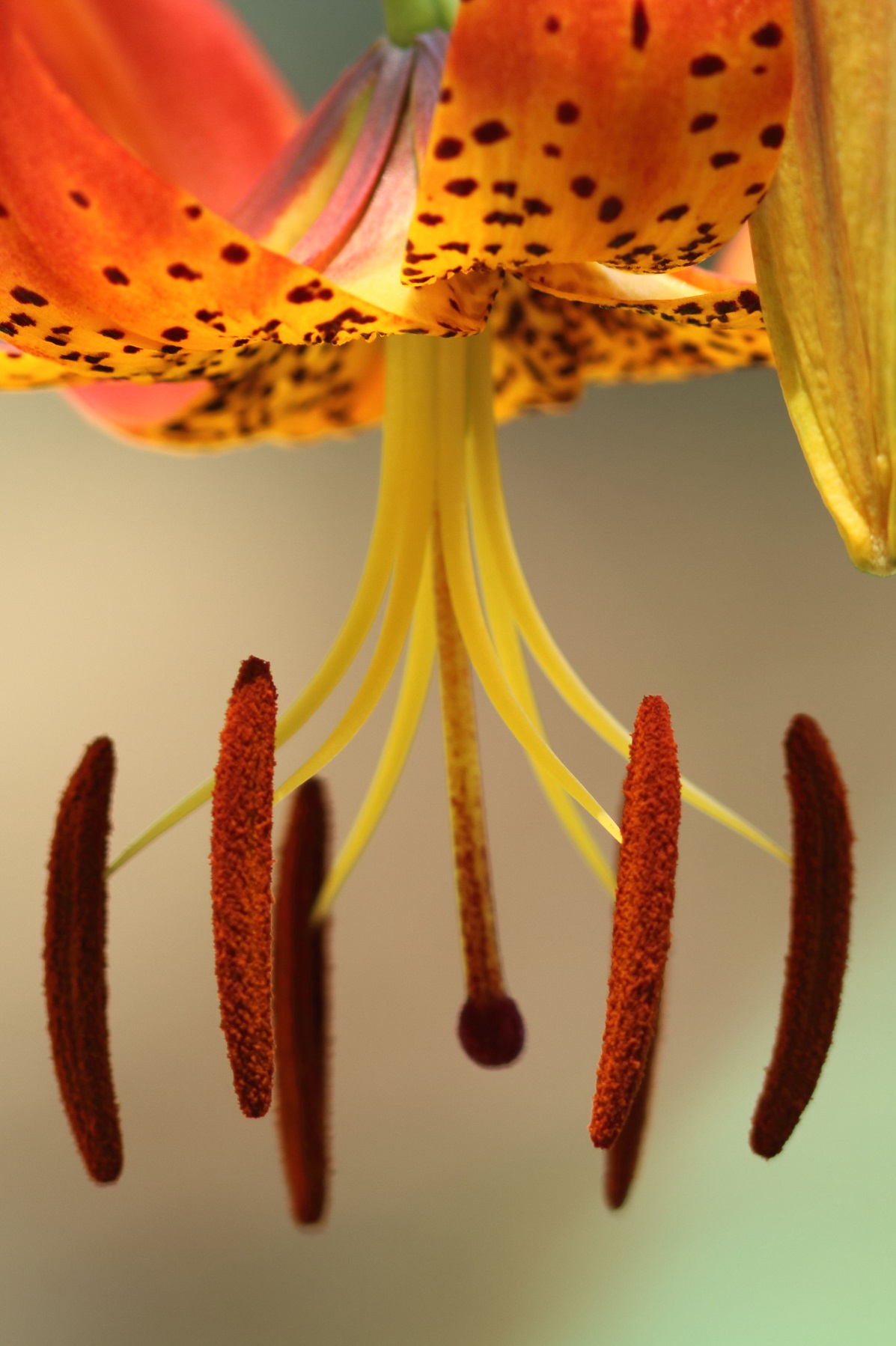
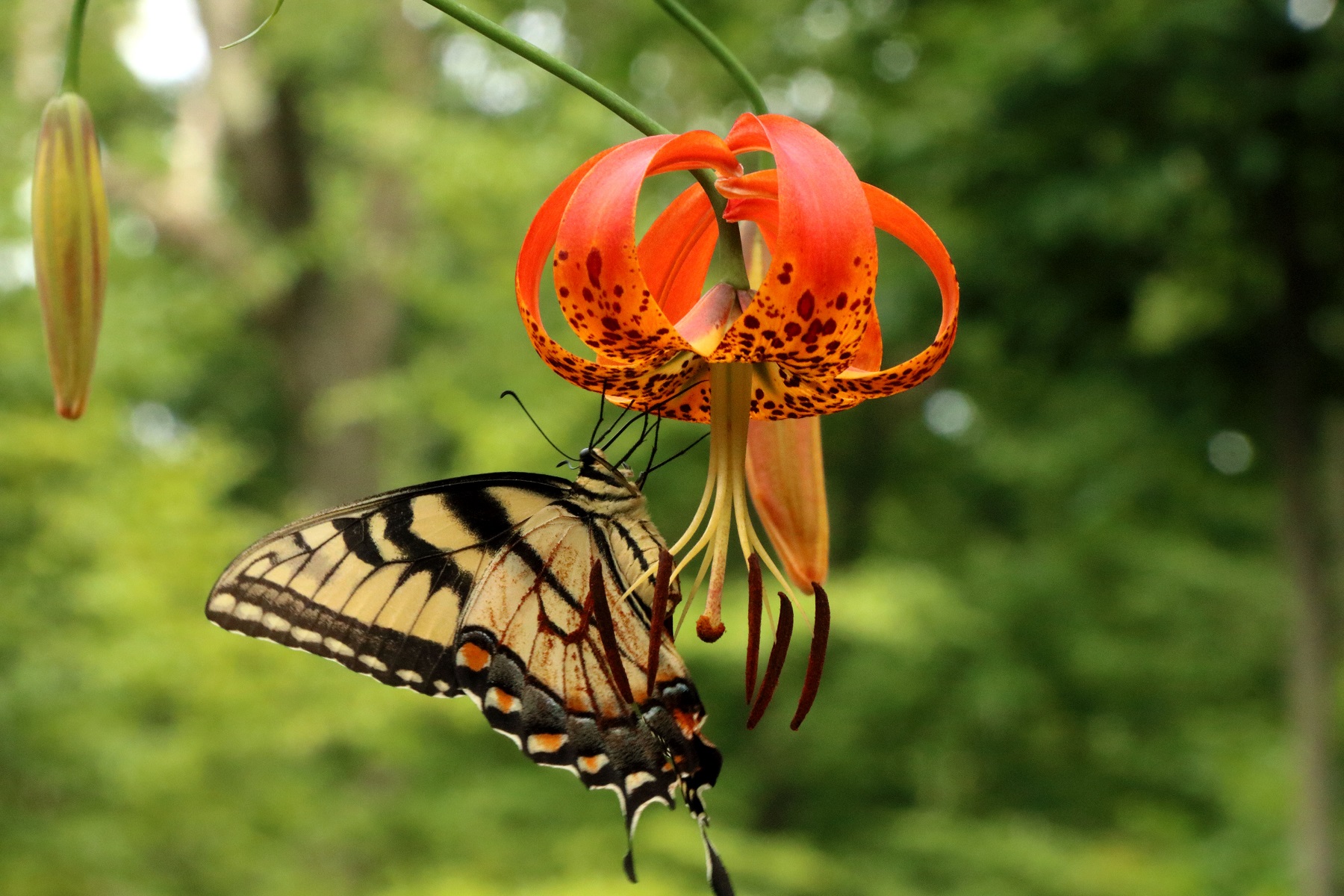
feeding
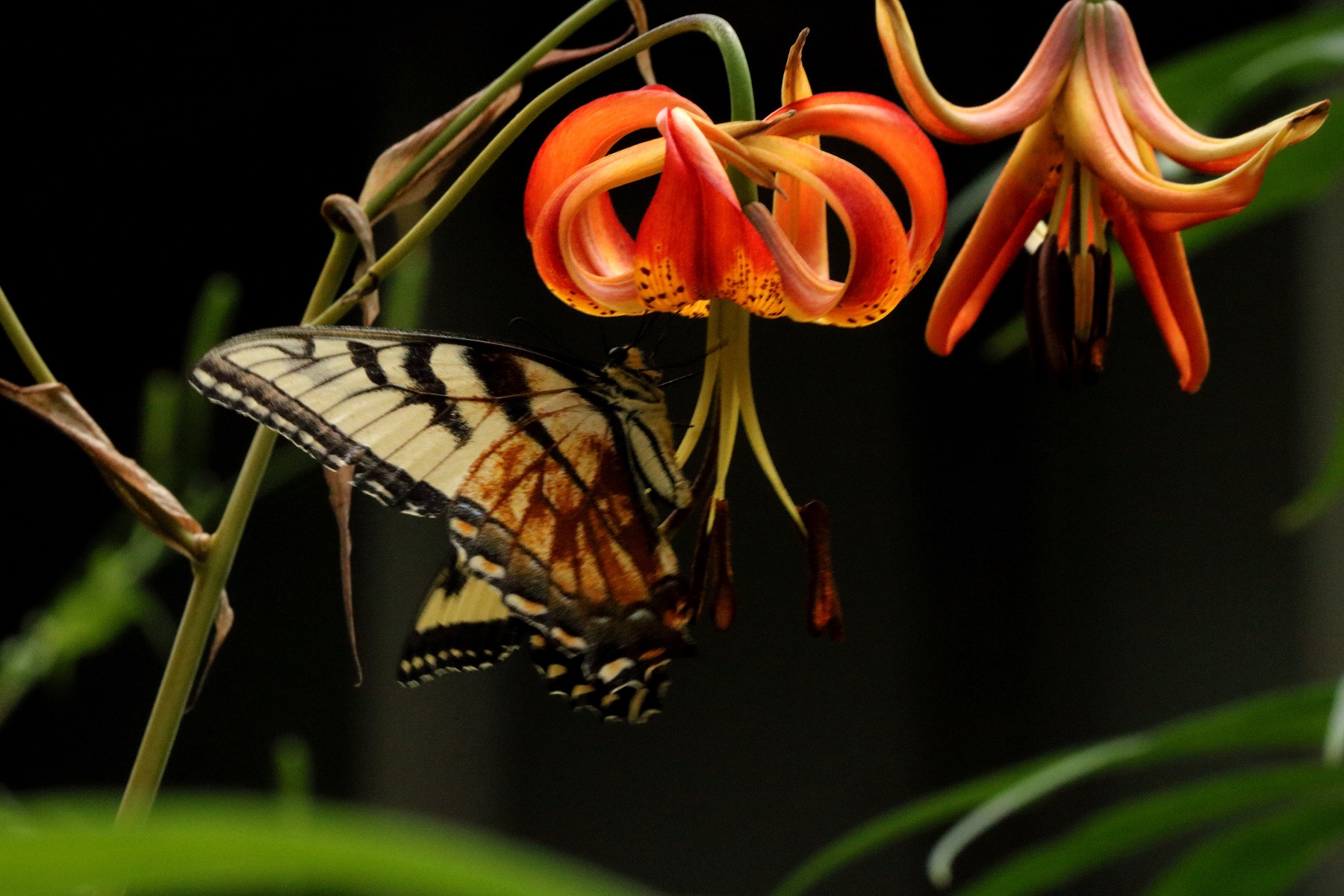
covered in pollen
Great Blue Lobelia
The two essential plants to extend the food supply for our little hummers into fall are Cardinal Flower and Great Blue Lobelia. Both like to grow in wet areas of the woodland garden. These are short-lived perennials, that seed out prolifically. We usually collect seed late in the season and scatter them where we would like more. Young plants can also be easily transplanted.
Great Blue Lobelia is the slightly shorter of the two, and maybe a little bit more bushy. Aside from this and the color, they are really very similar.
